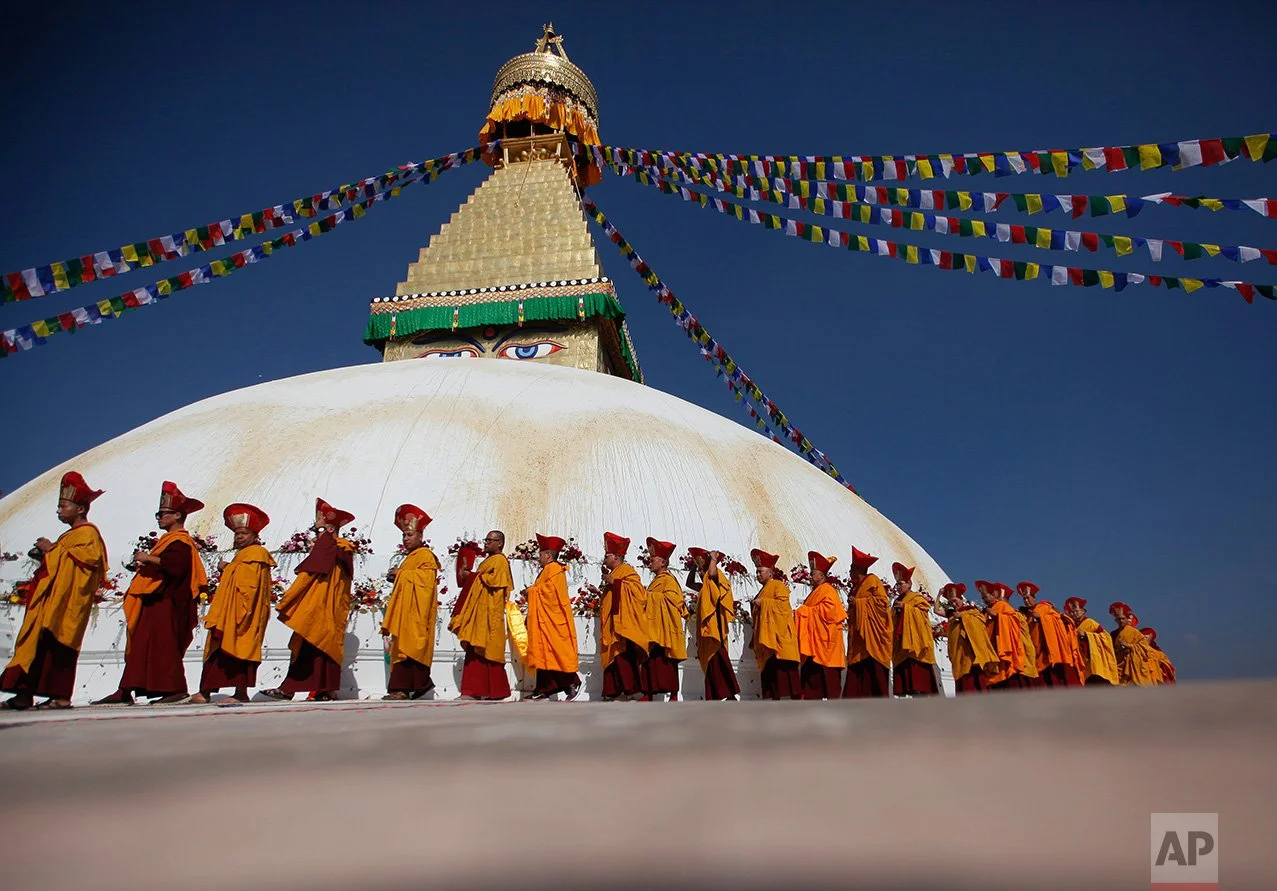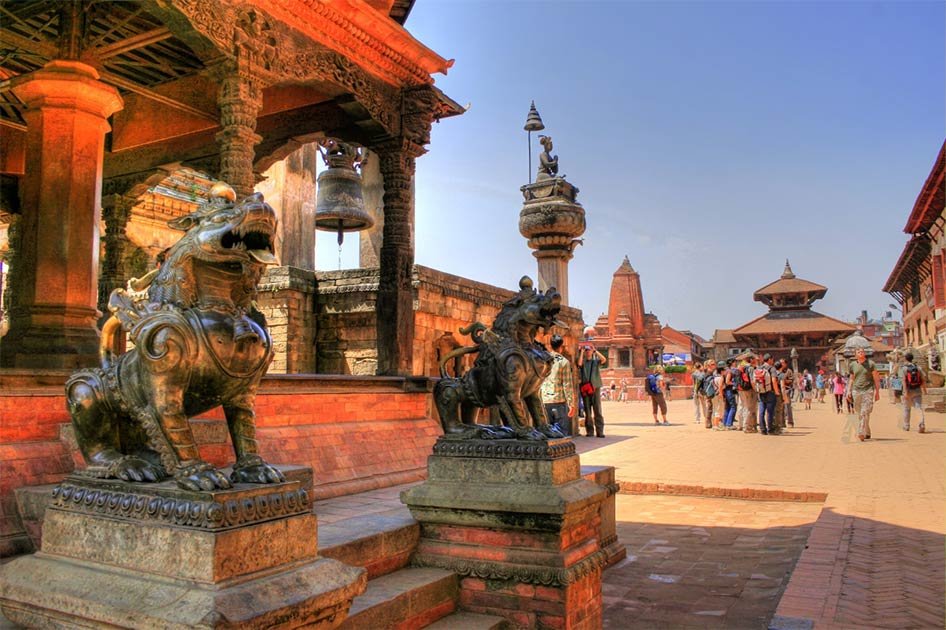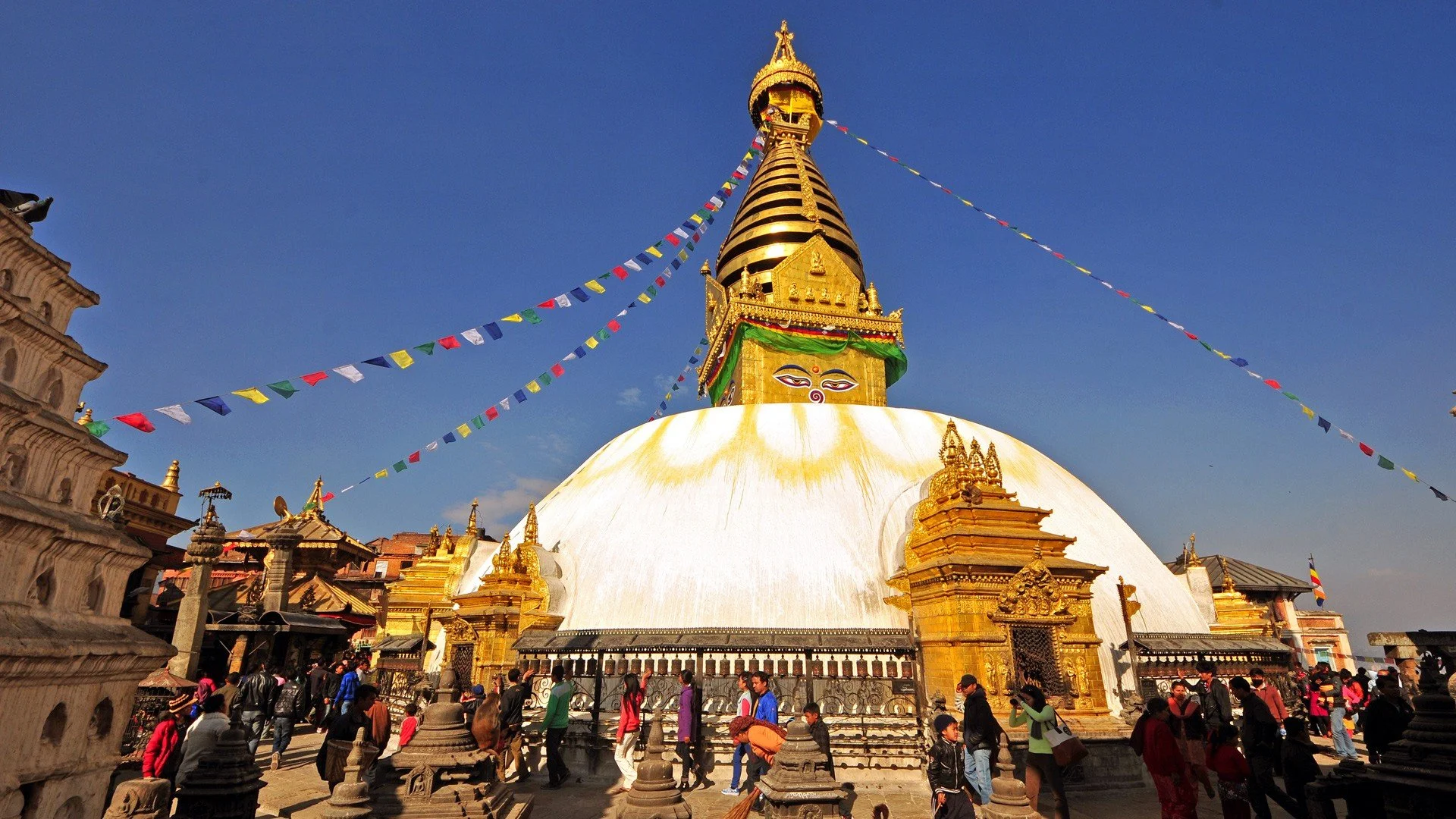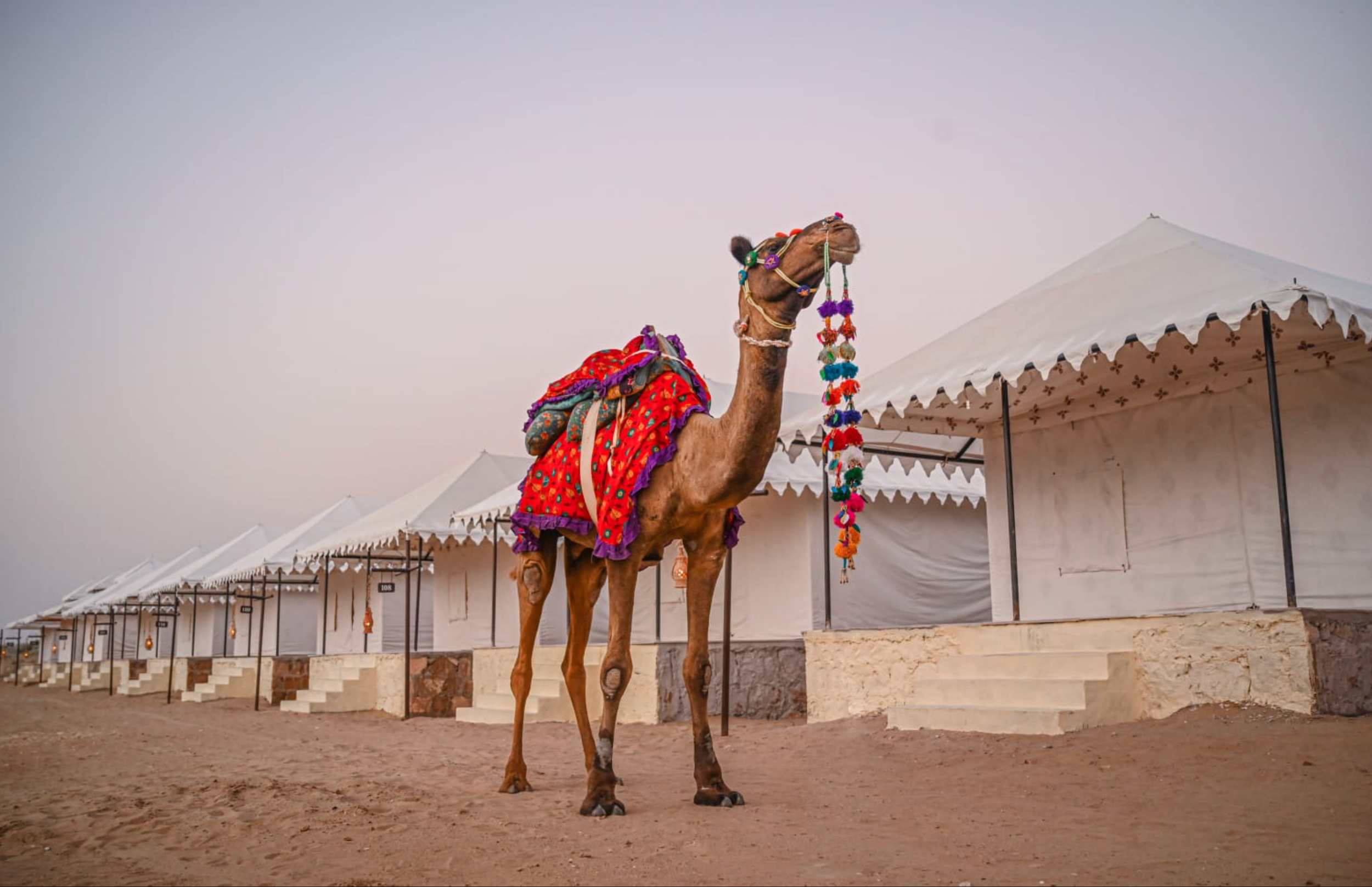Journey into Spirituality
A rare, all-inclusive retreat to Nepal & India
Part 1: Kathmandu Yoga Retreat: Oct 23-30, 2026
Part 2: India Spiritual Pilgrimage: Oct 30-Nov 9, 2026
The weaving of Buddhism in Nepal and Hinduism in India brings the spiritually powerful culture of yoga to everyday life.
Part 1: Take a journey with Yoga For Life: join Kelly Suttell and Raj Patra to witness ancient traditions and practices of yoga on this rare adventure through Kathmandu and Namobuddha. Touch the sky of spirituality, encounter sadhus, yogis, and Lamas, visit World Heritage Sites, and witness life inside Vajrayana monasteries.
Part 2: Continue your exploration with us throughout Northwest India, exploring the quintessential Hindu sites of highest significance, relatively untrodden by tourism. We’’ll stay in the cities of historical and spiritual significance as we understand the inter-weavings of different lineages all derived from Yoga. Each part of this retreat is guided by deeply knowledgeable and local guides.
PART 1: Awe-Inspiring Kathmandu
Day 1: Arrival in Kathmandu > Boudhanath Stupa
The moment your plane touches down, you’ll be greeted by the vibrant mosaic of the Kathmandu Valley set against the majestic Himalaya mountains. From the airport, ground transport will take you through the bustling city to our charming Newari-style hotel. Nestled near the bazaar of Thamel, yet serenely quiet, our hotel becomes the center for your yoga practice and daily adventures to spiritual sites of great significance. After settling in, our journey begins with a visit to the remarkable Boudhanath Stupa (pictured left).
As you approach Boudhanath Stupa, a hush of awe sweeps over you, as if the air itself holds its breath. Rising majestically against the Himalayan sky, the stupa’s massive white dome glows like a beacon of serenity, its golden spire shimmering under the sun’s tender caress. The all-seeing eyes of Buddha, painted in vibrant hues, gaze down with timeless wisdom, inviting you into sacred reflection. Fluttering prayer flags weave a kaleidoscope of color, their gentle rustle mingling with the soft chants of monks and the scent of incense drifting through the air. Pilgrims circumambulate the stupa, their quiet devotion blending with the hum of spinning prayer wheels and chanting, each turn releasing blessings into the breeze. The grandeur of this UNESCO World Heritage Site, one of the largest stupas in the world, feels like a portal to the divine—its serene majesty and spiritual pulse leaving your heart stirred, humbled, and forever touched by its ethereal grace.
Day 2: Kopan Monastery > Pashupatinath Temple
Morning yoga practice will help you overcome jet lag, take away any fatigue, and prepare you for the day’s adventure to Kopan Monastery, a Tibetan Buddhist monastery in the Mahayana lineage. After taking in the architecture, artwork, and surrounding grounds of the monestary, we’ll contract this Buddhist site with Pashupatinath temple, one of the holiest Hindu sites on the bank of Bagmati River. Step off the beaten tourist path with Raj to visit the meditation caves of Tilopa (988AD) and Naropa, founders of Mahayana and Hinayana Buddhism lineages. On our return to the hotel, we’ll witness one of the most spectacular pujas and aarti (worship with fire and oil-lamps) inside the main temple.
Day 3: Bhaktapur > Drive to Namobuddha
After a morning practice, lecture, and breakfast, we’ll travel to Bhaktapur’s Durbar Square, an ancient citadel inhabited, but untouched since 1400 A.D. Inside, see incredible sculptures, temples, king’s palace, and life as it was centuries ago. Today is not the day to forget your camera. That afternoon, we’ll depart the bustle of Kathmandu and drive to the serene Namobuddha Resort, an eco-lodge where the craftsmanship of your personal tiny-house experience will simply wow you! Enjoy organic, farm-to-table chef’s dining while you enjoy views of the majestic Himalayan range at your doorstep to the soundtrack of local birds.
Evening meditation, lectures, and internal practices will help you leave the normalcy of life behind and focus on the cultivation of freeing your mind.
Day 4-5-6: Namo Buddha
By now, most of you may contemplate moving into Namobuddha Resort permanently and savoring the sweetness of life with simple opulence. It is here, perched away from the city, where a meditative state of being seems to come effortlessly.
After an early breakfast, we set off on a drive through scenic farmlands, terrace cultivations, and small villages to the revered Buddhist pilgrimage site of Namobuddha and the impressive Thrangu Tashi Monastery, where we’ll stroll the village on foot.
We’ll also go on short hikes to the local towns of Balthali and Panauti and witness Maha Kala Puja at the famous and opulent Namobuddha Monastery. Prepare to be amazed by the artwork, deities, and the many Tibetan Buddha sculptures draped in the most elaborate Thanka fabric.
Day 7: Karma Lekshi Ling > Swayambhunath
Upon our return to Kathmandu we’ll visit Karma Lekshi Ling Monastery, the spiritual home of Dorje Andrey Lappa, founder of Universal Yoga. In this monastery, we get to the heart of the living quarters of monks, Lamas, Rimpoche, and the inner workings of how a monastery is run, how monks do their practices, and much more. If timing is on our side, we may even experience a monastary-specific puja celebration.
After Karma Lekshi Ling, we’ll head west of Kathmandu to Swayambhunath Stupa, one of the holiest Buddhist stupas in Nepal. It is said to have evolved spontaneously when the valley was created out of a primordial lake more than 2,000 years ago. This stupa is the oldest of its kind in Nepal and has numerous shrines and monasteries on its premises. Swayambhu literally means "self-existent one". Believed to date back to 460 A.D., it was built by King Manadeva and by the 13th century, it had become an important center of Buddhism. Legend has it that Swayambhu was born out of a lotus flower that bloomed in the middle of a lake that once spread across the Kathmandu Valley.
Day 8: Ancient City of Patan
A morning practice welcomes the much anticipated day because today we visit Patan — home to the valley’s finest craftsmen who have preserved ancient techniques of metal craft. A UNESCO World Heritage Site, Patan is an ancient living city and retains much of the old charm with its narrow streets, brick houses and multitude of well-preserved Hindu temples, Buddhist monasteries (vihars) and monuments. The predominant sound in Patan is that of the tinkering of craftsmen bent over the statuettes they are shaping. As in Kathmandu, Hinduism and Buddhism have co-existed here for ages, influencing each other, and the religious harmony is exemplary.
Today is your day to hunt, bargain, and shop now that you are somewhat familiar with the Nepali culture. Patan (The City of Living Art) is the epicenter of Nepali and Tibetan art, crafts, textiles, and sculptures. We visit shops where singing bowls have been made traditionally for generations. Then, after a quick session on how to bargain, we visit Tibetan Refugee Camp where women hand-weave wool carpets with tens of thousands of knots at blazing speed. The buzzing markets, the artistry of age-old temples and palaces, and the medieval feel bestow a definitive experience of shopping that you will remember years after your return home.
And, after all of this incredible Kathmandu experience, something majestic awaits in the next chapter of our journey …
PART 2: Spiritual Pilgrimage in Rajasthan
Day 9: Fly from Kathmandu to Rajasthan
Today marks the last day in our part 1 (Kathmandu) segment as we prepare to set off for Mother India. It is always tough to say goodbyes to the smiling faces of the staff, cooks, and caretakers at Hotel Vajra, as the purity in their smiles and love in their Namaste have connected hearts every year of our retreat.
Ah, Rajasthan! Embark on a journey where the sands of time whisper tales of valor, romance, and royalty. Let the vibrant tapestry of this desert jewel captivate your senses and steal your heart. Why Rajasthan?
Majestic Forts and Palaces: Wander through the golden ramparts of Mehrangarh Fort, lose yourself in the intricate beauty of Udaipur’s City Palace, or step into the opulent halls of Jaipur’s Amber Fort, each echoing the grandeur of a bygone era.
Vivid Culture: Immerse yourself in the kaleidoscope of Rajasthani traditions—dance to the soulful tunes of folk music, marvel at the artistry of block-printed textiles, and savor spicy delicacies like dal baati churma.
Desert Magic: Ride a camel across the shimmering Thar Desert, camp under a canopy of stars, and witness the surreal beauty of Sam Sand Dunes at sunset.
Festive Splendor: We time our visit to join the dazzling Diwali celebrations, where colors, lights, and traditions come alive. It is a rare opportunity to witness the largest of Indian celebrations.
Rajasthan is not just a destination; it’s a story waiting to unfold, as we let the land of kings weave its magic around us.
Day 10-11: Soaking in the Blue-City: Jodhpur
Jodhpur, the Blue City of Rajasthan, is a mesmerizing tapestry of history, culture, and vibrant hues woven into the arid embrace of the Thar Desert. Nestled beneath the imposing Mehrangarh Fort, a colossal sentinel of sandstone perched atop a rocky hill, the city exudes an aura of timeless grandeur. Its labyrinth streets, bathed in shades of indigo, pulse with life—narrow alleys lined with intricately carved havelis, bustling bazaars fragrant with spices, and artisans crafting treasures of leather and textile. The fort, a masterpiece of Rajput architecture, looms over the city, its ramparts whispering tales of valor, royal splendor, and centuries past, while offering panoramic views of the cerulean rooftops below.
Jodhpur is not merely a city; it is a living chronicle, where every blue wall, every fort turret, and every desert breeze carries the echoes of a regal past and the promise of an enduring legacy. Mehrangarh Fort houses temples like Chamunda Mata, a protector deity of the Rathore clan, symbolizing the fusion of royalty and religion. The city’s blue houses, often linked to Brahmin communities, reflect caste-based Hindu traditions, while its festivals and markets pulse with Hindu rituals and offerings.
Day 12: Camel Safari in the Sand Dunes of Thar
If you have ever been mesmerized by Lawrence of Arabia (a famous 1962 biographical adventure movie), or wanted to live a day in the life of Indiana Jones, well, wait no more!
The sun dips low, painting the Thar Desert in hues of amber and gold, as you embark on a camel safari in Rajasthan. Perched atop a gentle, swaying camel, you traverse endless dunes, the sand shimmering like a sea of silk beneath the vast, cloudless sky. The air carries a faint scent of earth and spice. Your guide, clad in a vibrant turban, hums a soulful Rajasthani folk tune, the melody drifting into the stillness of the desert.
As the caravan moves rhythmically, you pass scattered acacias and hardy shrubs, their shadows stretching long and thin across the rippling sands. A soft breeze whispers tales of ancient traders and nomadic tribes, while distant mirages dance on the horizon, teasing the eye with fleeting oases. The silence is profound, broken only by the camel’s padded footsteps and the occasional call of a desert fox.
As twilight descends, the sky erupts in a symphony of purples and pinks. You arrive at a camp nestled between dunes, where a crackling bonfire casts a warm glow. The aroma of smoky chai and freshly cooked dal baati churma fills the air. Under a canopy of stars, you sit on woven rugs, listening to local musicians strum the rawanhatta, their haunting notes weaving stories of valor and love. The night is cool, the desert alive with a quiet magic, as you drift into a serene slumber beneath the infinite Rajasthani sky.
Day 13-14-15: Lord Brahma’s Abode - Pushkar
Encompassed by over 50 ghats, Pushkar Lake is described as “Tirtha Raj” – the king of pilgrimage sites. A dip in the sacred lake is believed to cleanse sins and cure skin diseases. Over 500 Hindu temples are situated around the lake precincts. The lake is related to the mythology of the creator god Brahma and has been featured in epic Indian classics, such as the Ramayana and Mahabharata.
Nestled in the embrace of Rajasthan’s golden Aravalli hills, Pushkar is a celestial jewel, where time seems to pause in reverence to its divine serenity. This ancient town, one of Hinduism’s holiest pilgrimage sites, shimmers with an ethereal glow, its heart beating softly around the sacred Pushkar Lake, a tranquil mirror said to have blossomed from a lotus dropped by Lord Brahma himself. The lake’s crystal waters, bordered by 52 sacred ghats, reflect the blush of dawn and the twinkle of starlit nights, inviting pilgrims to bathe in its purifying embrace for spiritual renewal.
At the town’s soul stands the Jagatpita Brahma Temple, a rare sanctuary dedicated to the Creator, its crimson spire piercing the azure sky like a beacon of divinity. Surrounded by over 400 Hindu temples, each a delicate tapestry of stone and devotion, Pushkar hums with the gentle chant of mantras, the fragrance of sandalwood, and the chime of temple bells, weaving a melody that soothes the spirit. The Savitri Temple, perched atop a hill, offers a breathtaking vista of the town’s pastel-hued rooftops and the lake’s sacred shimmer, while the Varaha and Rangji temples add their own hues to this divine canvas.
Day 16-17-18: Diwali in the Pink City of Jaipur
Our final destination: Jaipur, the resplendent Pink City of Rajasthan, is a vision of regal splendor cradled in the golden embrace of the Aravalli hills. Bathed in the soft blush of dawn and the warm glow of sunset, its rose-hued facades shimmer like a dream woven from history and charm. This vibrant capital, founded in 1727 by Maharaja Sawai Jai Singh II, pulses with an idyllic allure, where majestic palaces, bustling bazaars, and timeless traditions dance in harmonious rhythm.
At its heart, the City Palace gleams like a jewel, its ornate courtyards and Mughal-Rajput architecture whispering tales of royalty. The palace’s Chandra Mahal, adorned with intricate peacock motifs and mirrored halls, reflects Jaipur’s opulent past. Nearby, the Jantar Mantar, a UNESCO World Heritage Site, stands as a celestial observatory, its stone instruments tracing the paths of stars with poetic precision. Perched atop a hill, the majestic Amber Fort glows in amber hues, its grand gateways and frescoed chambers overlooking the serene Maota Lake, where lotus blooms drift gently.
Jaipur’s streets are a kaleidoscope of color, alive with the hum of vibrant markets like Johari Bazaar, where gemstones sparkle like captured starlight and silks ripple in the breeze. The scent of jasmine and sizzling street food—sweet jalebis and spicy kachoris—mingles with the melodies of folk songs, weaving a sensory tapestry that enchants every visitor.
And, as if that was not enough, we celebrate Diwali as our grand finale before packing up this incredible bouquet of memories. What more to cap of this adventure to Incredible India and Nepal!
DETAILS
ARRIVAL & RETREAT START: Must arrive at Kathmandu Airport (KTM) before Noon on Oct 23, 2026; hotel check-in is at 2PM. You are encouraged to arrive a day earlier to rest and get over any jet lag. We can help arrange for additional night(s) at the same hotel, if available, and pass on any negotiated group rate to you.
DEPARTURE & RETREAT END: Retreat ends after breakfast on Nov 9, 2026 in Jaipur around Noon. If you would like to spend additional time in India, either in Rajasthan, or in other states, we can help you with proper information and guidance.
OPTIONAL ADD-ONS:
Morning Helicopter flight to Everest Base Camp: Soaring above the Himalayas on a helicopter tour to Everest Base Camp, the world unfolds in a most breathtaking grandeur. Jagged peaks pierce the sky, their snow-capped summits glinting under the sun, while deep valleys cradle serene monasteries. The awe-inspiring vista of Mount Everest, towering in majestic silence, captivates the soul, blending thrill and tranquility in a powerful dance. Words cannot describe the awe-inspiring experience of having breakfast at Hotel Everest View at 13,000 feet while watching golden sunshine reflect off of the Mt. Everest. You can decide as late as Sep 30, ‘26. Your flight will be on the morning of the last full day in Kathmandu. See video.
COST: There is no upcharge; you will pay our Nepal guide the running price of helicopter-tour companies at the time.
Private tour of Kolkata during Durga Puja before the start of the Kathmandu retreat. Words cannot describe, videos cannot tell, photos cannot capture the sensory experience of the quintessential five day Hindu celebration — a most cherished time in West Bengal. In Kolkata, the City of Joy, Durga Puja transforms the streets into a radiant tapestry of devotion and delight. As autumn’s golden light bathes the city, intricately crafted pandals rise like ephemeral temples, each a masterpiece of art honoring Goddess Durga. The air hums with the rhythmic beat of dhak drums, the scent of incense, and the laughter of families weaving through vibrant crowds. From dazzling light displays to soulful bhajans, every corner sparkles with fervor, while the aroma of bhog—sacred feasts of khichdi and sweets—wafts through the night. Kolkata’s heart pulses with this grand celebration, inviting all to bask in its divine, joyous embrace. See video.
Kolkata is home of Raj and he is returning to Durga Puja after long 27 years. Here, you will be part of Bengali hospitality, culture, and food: the three things that all India revers about this city.
COST: This is not so much a tour, as it is an invitation to join Raj’s family and home town to be part of a unique opportunity. Depending on the number of people interested, we’ll make hotel and transportation arrangements, and share the total cost.
PREMIUM ALL-INCLUSIVE RETREAT consists of:
All preparatory classes on Hinduism, Buddhism, culture, traditions, etc. leading up to the trip
All accommodations for 17 nights in six different cities and desert safari.
Flight from Kathmandu to Jodhpur.
All ground transportations in private bus and train for 18 days within destinations, including airport transfers.
All yoga classes and lectures.
All guided tours and sightseeing, entrance fees and tickets, cultural guides/experts throughout.
Vegetarian breakfasts, lunches, and dinners every day of the retreat at high-quality restaurants, and non-alcoholic beverages.
Safe, bottled drinking water for the entire duration of the retreat.
Destination guides: one in Nepal, and two in India.
NOT INCLUDED: Anything that is not mentioned above. Reasonable tips for destination guides,
RETREAT PRICE:
Double Occupancy: $TBD | Single Occupancy: $TBD.
Register early and save $XXX, available only when paid in full by 3/1/2026.
A deposit of $1000 is required to reserve a spot *. All payments are due by 7/1/2026.
Email info@yogaforlifepdx.com or message +1 206 992 9031 for more details.
* We are bound by the non-refundable restrictions from our vendors. 50% refund by 6/1/26 non-refundable after 7/1/26.
Your Guides: Raj Patra and Kelly Suttell
Lamala and Raj Patra at Karma Lekshey Ling Monastery, Kathmandu, Nepal
Born in Kolkata, India in a spiritual family, Raj was soaked in Hinduism and yoga traditions at a very young age. Practiced in Swami Yogananda lineage, his current teacher is the father of Universal Yoga lineage, Dorje Andre Lappa, a Vajrayana Buddhist. Raj has traveled to Nepal many times and is deeply knowledgable about eastern practices, mythology, and spiritual traditions. Find out more about Raj.
“My goal is to educate others on the essence of yoga traditions. On this adventure, you will touch the sky of spirituality and the heart of adventure. You’ll visit known and hidden holy sites, witness peaceful ancient culture, and meet yogis — this trip will remain unforgettable.”
Kelly Suttell
Kelly has traveled to India and Nepal regularly since 2007. Not only is she familiar with the eastern spiritual ways of life, she has experienced the impact of such life firsthand through her relatives, extended family, and friends there.
Trained in Universal Yoga, she is also an integrative healing facilitator and wellness coach, and has more modalities of knowledge under her belt than her unassuming smile would care to admit. Find out more about Kelly.
“Nepal changes you. The culture is yoga in action, the people are peaceful, kind, and giving, and pure heartedness is a currency. When you’ve been steeped in that experience, your perspective changes and it transforms you.”













